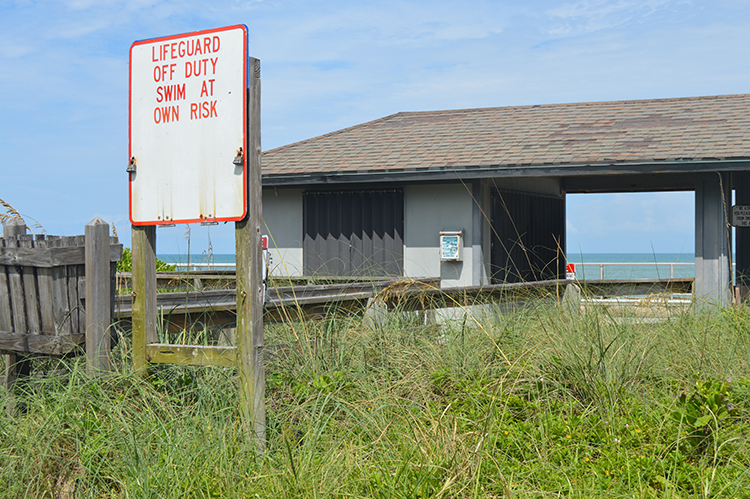
During the past 18 months of the pandemic, Vero’s pristine public beaches became a highly sought-after place to escape. Most days, beachgoers can take a swim knowing that Vero Beach’s lifeguards have their back.
On Sept. 8, however, messages were posted on social media notifying the public that there would not be a lifeguard on duty at Humiston Beach on Sept. 9 or 10. That initial closure extended through the weekend, with the lifeguards returning to the stand on Tuesday, Sept. 14, to fully staff all three public beaches within the city limits.
“We had a bunch of people out sick and had to close one beach. We didn’t anticipate going that long, but we had callouts. Like every department here in the city, our department has had several COVID cases over the last several weeks,” said Jim O’Connell, COVB recreation director.
According to O’Connell, while the pandemic added to the staffing problems, it was not all COVID-related. Between scheduled vacations and other sick days taken, O’Connell explained that they didn’t have enough lifeguards to guard all three beaches safely.
The decision was made to close Humiston Beach and direct beachgoers to the other two city beaches, which cover a larger area, preferring to ensure there was a good level of coverage at two locations instead of minimal coverage at all three.
“Humiston being the least used beach of the three, we decided to close that one,” explained O’Connell.
A beach closure like this is unprecedented at the three city beaches – Jaycee, Humiston and South Beach – and so far, things have not gotten so bad in the county lifeguard corps. “The Parks and Recreation Department has not experienced any beach closures due to staffing or COVID-19,” county spokesperson Kathleen Keenan said on Monday.
Indian River County is the northernmost county on the East Coast that has guarded beaches 365 days a year, and according to an annual beach report distributed by the Vero Beach Lifeguard Association, it is estimated that pre-pandemic more than 1 million people visit the city’s local beaches each year.
Historically, September is a slow month with children heading back to school, frequent thunderstorms, and other weather-related deterrents.
Typically, two lifeguards are stationed at each of the three beaches with a supervisor on duty to rove as needed. With a full-time staff of nine, O’Connell says that is usually enough to fully staff the lifeguard stations.
Fortunately, no incidents were reported as having occurred when there weren’t lifeguards posted at Humiston Beach.
“I was out there quite a bit myself. The good news is that we weren’t that busy the times I was out there. People generally weren’t swimming or stayed in close. I saw people walking out to their knees but not swimming out too far,” he said.
O’Connell noted that lifeguards would be on duty from 9 a.m. to 5 p.m. going forward instead of the summer 9 a.m. to 7 p.m. schedule. “That allows our full-timers to work five, 8-hour shifts instead of four, 10-hours,” he said. “That gives us a little more flexibility.”



